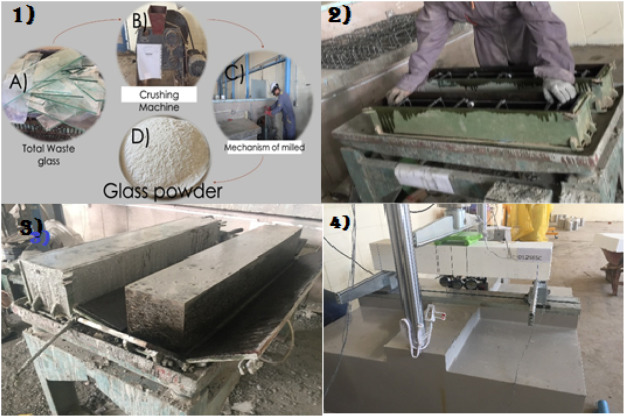
Mechanical Properties, Energy Impact Capacity and Bond Resistance of concrete incorporating waste glass powder
Mechanical Properties, Energy Impact Capacity and Bond Resistance of concrete incorporating waste glass powder
Prof. Dr. Akram S. Mahmood
College of Engineering / University of Anbar
https://iopscience.iop.org/article/10.1088/1757-899X/745/1/012111
The present study is investigated about effect of glass waste as powder as partial replacement of cement in some properties of concrete. These properties included compressive strength, splitting and flexural tensile strengths, impact resistance and bond strength. The effect of glass as powder was examined by compared to control specimens without glass powder replacement. Three percentage were tested: 0%(control), 10 and 15%. Results showed that using glass powder improved properties of concrete under different type of loading. Compressive strength increased by 26.34% and 22% when compared it with control mix for 10% and 15% glass powder, respectively. While splitting tensile strength increased by 23.5% and 28.7% more than control mix for 10% and 15% glass powder, respectively. And modulus of rupture increased by 17% and 10% for 10% and 15% glass powder, respectively. The impact resistance of mixes 10% and 15% of glass powder were increased by 14.3% and 4.76 % in compression with control mix, respectively. Finally glass powder also improves bond strength where the ultimate bond strength increased by 4.7 % and 6.2 % for 10% and 15% glass powder respectively. Then the utilization of waste glass as powder in concrete reduced amount of cement and improved its resistance to load.

Experimental Work
Three mixes were casted include the control mix, the 10% and 15% WGP mix which used as partial replacement of cement weight. The water / cement ratio (W/C) was 0.29 while the mix ratios of concrete gradient were 1: 2.13: 2.83 (cement: sand: gravel). Six cylinders (300×150 mm) were made for each mix for compression and splitting tensile strengths tests for each mix, in addition, nine prisms (100×100×500 mm) were casted to examine flexural strength of concrete mixes.
Six cubes (100×100 mm) and six disks with 150 mm height and 50 mm thickness were casted to investigate pull out test and impact test, respectively where the pull out test and impact test were made according to ACI 544 [14] and specification [15], respectively while the compression, splitting tensile and flexural strengths were performed according to ASTM C39/C39M - 05, ASTM C496 and ASTM
C293specifications, respectively.4
Conclusions
As a summery, the following conclusions were made according to experimental results:
1- Compressive strength was improved due to replaced cement partially by WGP. It increased by 26.34% and 22% compared with control mix for 10% and 15% glass powder, respectively.
2- Splitting tensile strength increased by 23.5% and 28.7% more than control mix for 10% and 15% glass powder, respectively. And modulus of rupture increased by 17% and 10% for 10% and 15% glass powder, respectively.
3- The number of blows required to failure of mixes 10% and 15% of glass powder were increased by 14.3% and 4.76 % in compression with control mix, respectively.
4- The ultimate bond strength between concrete and steel reinforcement increased by 4.7 % and 6.2 % for 10% and 15% glass powder respectively.



.png)